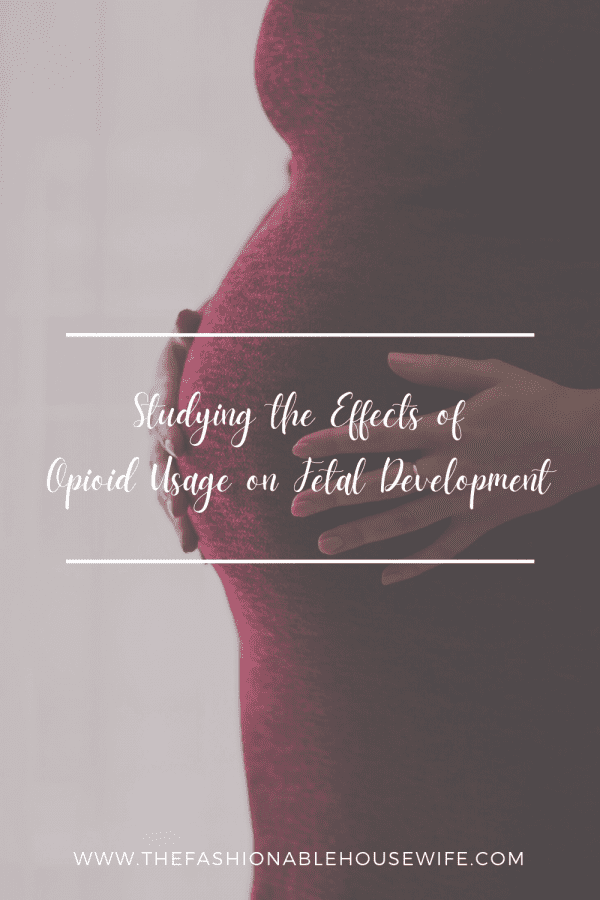
In 2015, the Centers for Disease Control and Prevention published a study that showed a third of women aged 15 to 44 receive a prescription for opioid medication every year. This in itself is not so unusual as opioids are a popular drug choice for pain management, but the number also represents women in their childbearing years who may have had exposure to opioids before or during pregnancy.
Furthermore, a 2019 survey reports that 7% of women self-reported as being prescribed and using prescription opioids to manage pain while pregnant. Among the opioid medications used by these women were oxycodone, hydrocodone and fentanyl—all Schedule II drugs because their highly addictive nature increases the chances of them being abused, which is what happened with 21.2% of the women who were surveyed. However, not everyone is willing to admit that they used opioids during pregnancy, so a new study proposes to detect opioid usage disorders by observing changes to the placenta.
The 2020 study called “Maternal oxycodone treatment causes pathophysiological changes in the mouse placenta” was authored by biomedical science researchers at the University of Missouri. Using an animal model instead of human cell cultures allows them to observe opioid drug effects on the developing embryo. The study focuses on oxycodone, an opioid drug that has been prescribed to pregnant women for pain relief, and how its usage creates biological markers detectable on the placental structure.
Concept and Methodology
The placenta is a nonpermanent organ that develops only during a pregnancy, and it houses the embryo while attaching itself to the uterine wall. It is also responsible for supplying the embryo with oxygen and nutrients from the mother. For this study, the scientists performed tests on mice because mouse placenta has many similarities to that of humans, including cells that can only be found in the placenta and come in contact with the mother’s blood. Mice also have a much shorter gestation compared to humans, and the 21-day period from conception to birth allows researchers to track changes at a faster rate.
The female mice were given a daily dose of oxycodone before and during gestation. Upon collection, the placenta of the oxycodone-treated mice showed that the drug had caused damage to the placenta and that the cells responsible for sustaining brain development had been greatly reduced. Male and female placentas also responded differently to the presence of oxycodone, which the researchers believe can be used to determine if a fetus has been exposed to the drug while in utero. The authors plan to conduct further studies on how oxycodone affects the baby mice when they are born.
Potential Applications
The effects of opioid usage on children who received exposure in the womb is not a new observation but more research is needed to understand how developmental delays occur. This study’s breakthrough with the identification of potential biomarkers can make it possible to assess for substance abuse in newborn screenings. Doctors may also be better able to identify the factors that contribute to developmental delays in children affected by substance use disorders, and thus be able to deliver more effective treatments.
The study also gives cause to reevaluate the prescription of opioid medication for use during pregnancy and to screen for substance abuse and provide early intervention. As a drug with a high likelihood of causing user dependence, opioids can be misused and be the cause of substance use disorder. This behavior is especially risky for pregnant women as opioid use disorder contributes to the most severe cases of neonatal abstinence syndrome. Newborns exposed to substances while in the womb can experience drug withdrawal symptoms at birth, including seizures that can cause cognitive damage. Treatment for withdrawal symptoms can last for up to 6 months.
Fitting into the Bigger Picture
Opioid medications have the highest rates of prescription drug abuse and contribute to the opioid crisis in the US. In Florida alone, 70% of drug-related deaths are attributed to opioid usage. Miami drug rehab facilities and other Florida-based treatment centers have even created focused programs for addressing opioid addictions, as almost half of opioid abuse cases are for prescription drug abuse.
The University of Missouri study may encourage health professionals to reconsider opioid prescriptions in favor of non-opioid alternatives. There is also a need to properly inform their patients about the risks involved in using opioids, as women who may have a planned or unplanned pregnancy may not be aware of the drug’s possible effects. Lessening opioid prescriptions and promoting patient education may not necessarily solve the nation’s opioid usage crisis, but they are important first steps in reducing its usage among women and protecting children as a vulnerable population and will help them to stop using drugs.



